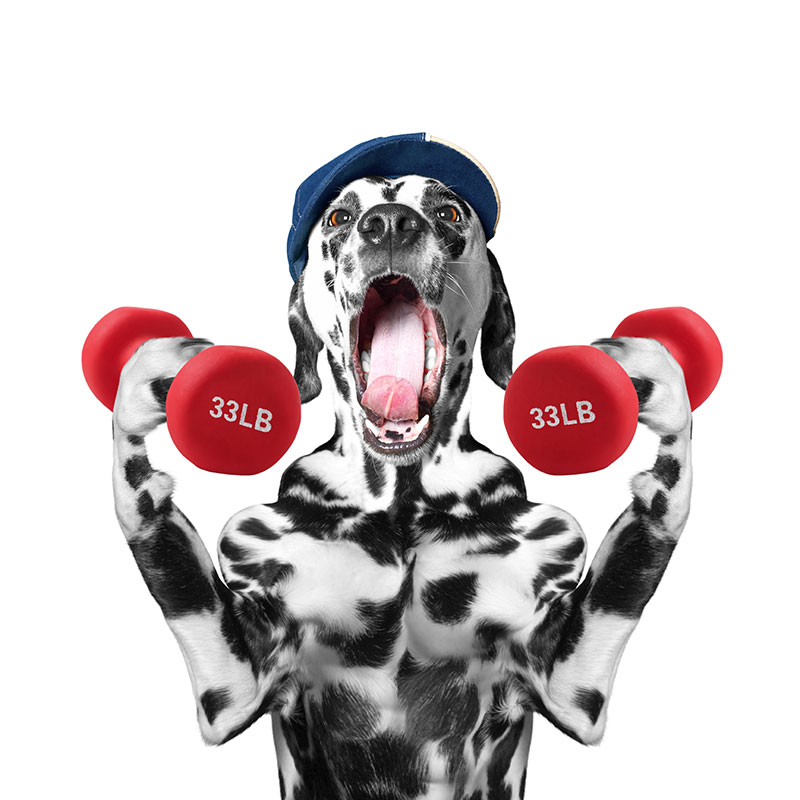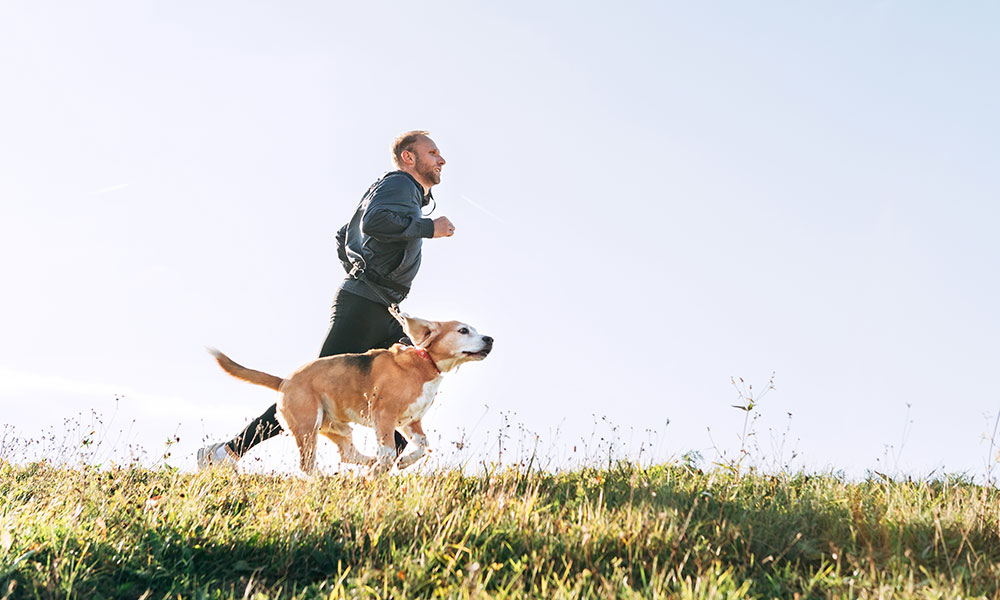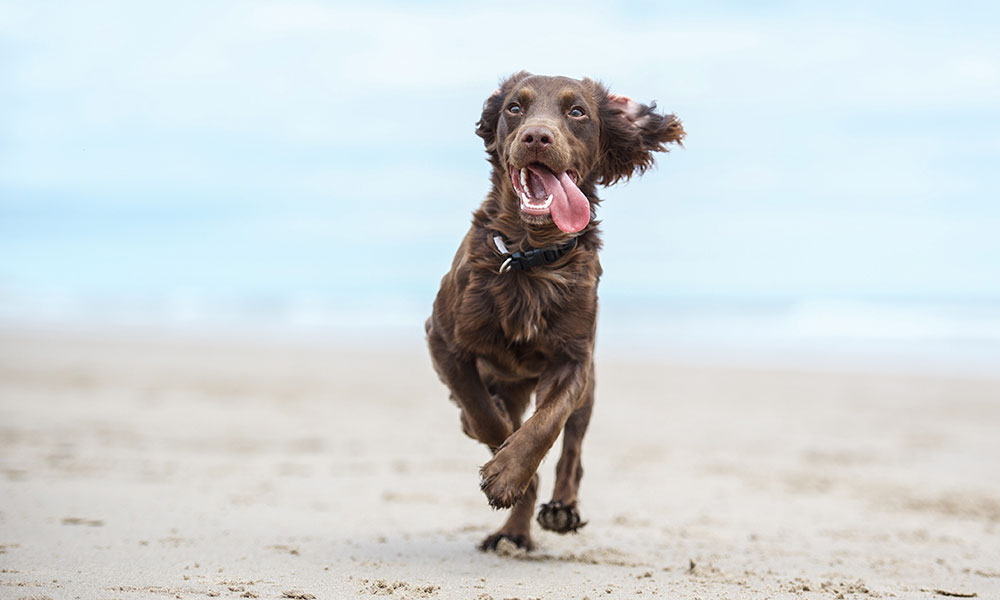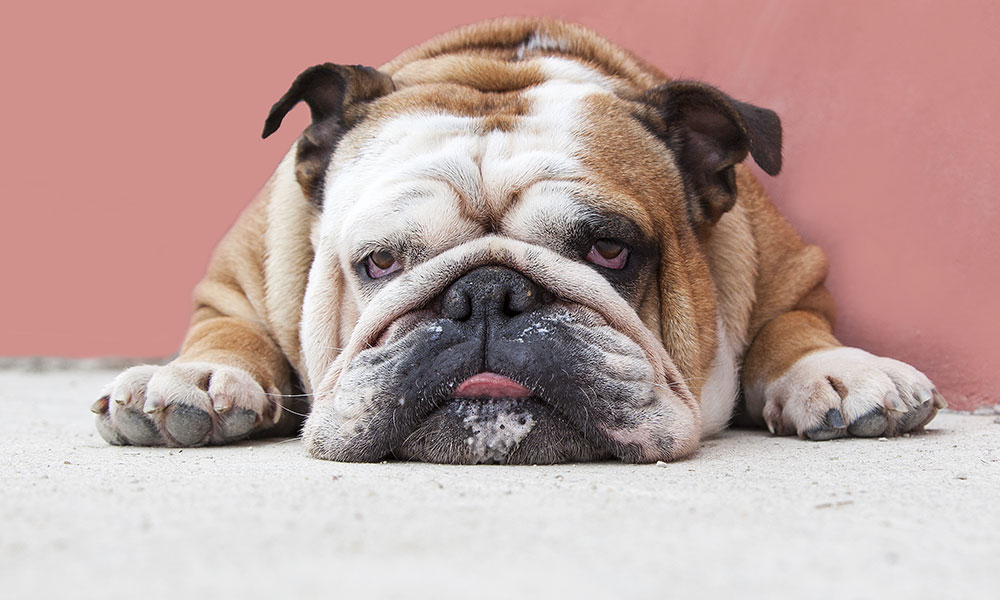Tell us if any of this sounds familiar: Your dog is howling at the sky for seemingly no reason though the day. You come home from work or errands to find that your couch has been completely destroyed and its remnants have been scattered all over your floor. Those aren’t the warning signs of an aggressive dog, but more an overly energetic and pent up puppy! Just like us, even more so in fact, dogs need activity and exercise to remain healthy. Sure, having our pooches play tug-of-war at home is fun, but they’re wild animals. They were bred from the wild and have an instinct to run, hunt and exercise. If we restrict those needs by not meeting their exercise requirements it will only lead to more issues further down the line. This article is going to explore the amount, and types, of exercise that dogs need. Not only by age, but by breed as well. Our hope is that by the end of this article you will understand the needs of your pet more and grow as a responsible dog owner.

How Much Exercise Do Dogs Need and Why?

The amount of exercise that your dog needs is highly dependent on a couple different factors. Their Breed and age. Just like you notice certain activities or workouts getting more difficult with age, so does your pup. A puppy is going to require more exercise than a senior dog. A larger dog will require more than a smaller one. Focusing on the proper regimen for you pooch will ensure that you don’t manage to over work, or under work, them.
Let’s see if this scenario rings a bell. You are sitting at home and, just like a rocket, your new puppy comes flying around the corner, skids on the tile or hardwood and continues back out of sight into the next room in their adventure. Only to find them 5 minutes later, curled up on the floor and fast asleep. Some call it “puppy energy” others “the zoomies”, but they are the same thing. Just because your new pup is a ball of energy doesn’t mean you need to take them out on a 60-minute walk, however. While puppies can be a handful, getting their daily activity is relatively easy to accomplish. Most of the time they can accomplish it themselves by doing exactly what we mentioned earlier. Letting them run free in the house, tossing a ball or taking them into a yard (if you have one) to zip around in circles for 20 minutes is more than enough to raise a healthy, active puppy.
Eventually, that puppy is going to grow into an adolescent and adult dog. This is where a more structured exercise regiment needs to be factored in. Your puppy may bark or tug at a pant leg when they are bored, but a full grown Great Dane is going to do far worse to your belongings if they are not given adequate exercise. We will get into how your dog’s breed affects the amount and type of exercise needed later, but most adult dogs require a certain amount of activity to remain calm and happy. The average amount of exercise that a healthy, medium to large sized dog should do a day is around the 40-60 minute mark. If that is a number that makes you clutch your pearls and gasp, then pet parenting may not be for you. At least, not for a larger dog breed.
Just like us, dogs need less activity as they age. Your 15 year old pet is in no way going to require the exercise of your 5 year old. While your older dog still requires a decent amount of exercise, adjusting it for their age and capabilities is paramount. Adjusting your daily walk to just 20-30 minutes is a good starting point. Just because your dog is older doesn’t mean they don’t want to still be taken on walks. Owners just need to find that ‘sweet spot’ where it doesn’t leave them exhausted, but they still manage to maintain a healthy balance of rest and exercise.
Exercise By Breed

This is where things expand past age and more into nature. It sounds obvious to state that a chihuahua needs less activity than a Malamute, but they do. The size and personality of your dog factors into their exercise schedule more than you may think, so we’re going to break it down by size in our dog breed exercise chart.
Small Breeds:
Chihuahuas, Yorkies, Pomeranians and so on are small enough to fit in your handbag so you don’t need the entire city or town to keep them active. Likely, aside from going outside to use the bathroom, they don’t even need to leave the house to get enough exercise.
Large Breeds:
Huskies, Mastiffs, Great Danes and others fall into this category. They are a pet that is going to give lazy pet owners the most trouble. Due to their size, not only do they require ample dog food to keep them going, but activity to burn it off. If you decide to get into owning a large dog breed without researching the requirements, your furniture and pillows will never be the same.
Active Breeds:
This is for the dogs that fall in a category where they can be small or large, but need ample exercise. Where medium to large dogs require around 60-minutes of activity per day to remain healthy, active breeds like: Golden Retrievers, Russell Terriers, Huskies and scent hounds require upwards of 90.
Brachycephalic Breeds:
If your pet of choice is a Bulldog, Pug, Shih Tzu or any breed with a “smushed in face”, they will require little to no exercise to remain healthy. Due to their signature snouts, all of them suffer from respiratory issues and being pushed for much more than a 10-15 minute walk could wear them out more than they would like.
Types of Exercise and The Cost of Laziness

Taking our dogs for walks every day is a great way to get them the much needed exercise that they require. But a dog’s exercise doesn’t need to be restricted to just that. There are tons of ways that dogs love to play and adventure that doesn’t need to be as mundane as a walk. If you’re the type of pet owner to have a larger dog then the odds of you already living an active lifestyle are pretty high. Working your dogs exercise into your own is a great way to cross two items off the list at the same time. Bring them for walks or your morning run. Do you frequent hiking paths in your area? Bring them along! Dog parks are great ways for your dog to interact and socialize with other dogs and obtain their daily activity through play. Even an old fashioned game of ‘fetch’ can be great exercise for your dog.
The fact of the matter is, you just cannot afford to be a lazy dog owner. Taking on pet ownership is a responsibility and if you’re not prepared for it, you will realize it quickly. Brushing off your dog’s daily exercise can lead to lethargy, diabetes, aggression, obesity and more. It’s unfair to your dog to keep them locked up when they need to be outside. It’s even worse when those cases wind up having a dog returned to a local animal shelter because a new pet owner did not educate themselves on the responsibilities of owning a dog. If you can’t dedicate yourself to an hour of exercise a day for yourself, then there’s a possibility that (large) dog ownership isn’t for you. Try a cat. They probably dislike going for walks just as much.
Conclusion

Jumping into a new endeavour or responsibility should always be started with adequate research. Our hope is that you learned that there are tasks that come with owning a pet. Sure, they will snuggle and love to lay on you while you relax at the end of a hard day, but the end of your hard day might just be the beginning of theirs. If you live in a smaller space and don’t have easy access to a yard or park, a medium to large dog might not be for you. Who’s to say that closes the door on owning a dog, however. There are tons of breeds and sizes of dogs to choose from. Finding one that aligns with your way of life is the most crucial step when deciding on a new pet. Are you active? Do you like to go for walks or runs? Do you have a yard or is there a park nearby? Can you handle the work that comes with owning a dog? If the answer is yes then you’re ready to get into the rewarding world of owning a dog. If it’s a maybe or a no, then maybe there should be other avenues to explore. Just because you may not be ready right now doesn’t have to mean you never will be. Lives change, schedules change and when you feel like you can give a dog the attention and activity they need, you can take that glorious leap.
Frequently Asked Questions (FAQ)
Does my dog need more exercise?
The amount of exercise that a dog requires is dependent on their age, breed and temperament. If your dog is damaging property and acting out, that’s a good sign that they are in need of more attention. If your dog seems content and quiet, odds are they are already fulfilled in that area.
Is walking your dog enough exercise?
Yes, but it depends on how long. Larger and more active dogs require anywhere from 60-90 minutes of walking while a smaller dog may only need 10 minutes. It’s up to the owner’s discretion, and a veterinarians recommendation, on how many walks your dog requires a week.
How many hours a day should a dog exercise?
That is entirely dependent on their age, breed and energy level. A laid-back 3 year old golden retriever might require less exercise than a 8 year old active one. Rule of thumb is, for most dogs, to get anywhere from 30-60 minutes of activity per day to maintain a healthy and happy dog.
Can a lack of exercise make a dog more aggressive?
Yes. If a dog is not getting adequate exercise there is a good change that they will become more temperamental and aggressive. This won’t always present itself in a violent or aggressive way, but can result in acting out or damage to your own property.
Want to Learn More?
Download our AILMENT GUIDE NOW.
PLUS! all FIRST TIME buyers get 50% off their additional order. Visit verlota.com to get your discount code.





